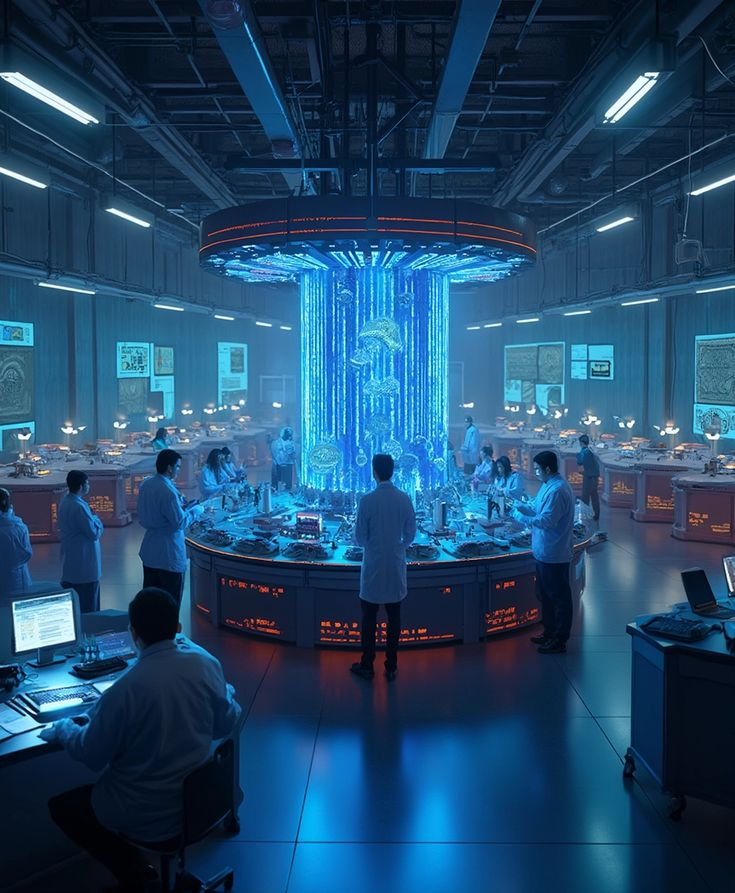Topological Quantum Computing with Majorana Fermions
Uncategorized
The world of quantum computing is evolving rapidly, with new theoretical models and breakthroughs coming to the forefront. One of the most promising avenues in this field is topological quantum computing, a concept that has the potential to revolutionize how we approach information processing at the quantum level. At the heart of topological quantum computing lies Majorana fermions, exotic particles that are being explored as the key to creating more stable and reliable qubits for quantum computers.
For students interested in cutting-edge technologies and those with a keen interest in emerging fields like quantum computing, enrolling in a program at the Best college in Haryana for BSc Interior Design offers a unique chance to explore interdisciplinary concepts. While quantum computing and interior design may seem vastly different, the innovative spirit and problem-solving approaches learned in interior design can be beneficial when approaching complex and abstract scientific topics, such as quantum computing.
What is Topological Quantum Computing?
Topological quantum computing is a type of quantum computing that uses topological states of matter to encode information. Unlike traditional quantum computing, which relies on qubits that can be fragile and easily disturbed by environmental factors, topological quantum computing seeks to create more stable qubits by utilizing topological phases.
In conventional quantum computing, qubits are typically represented using superconducting circuits, trapped ions, or other physical systems that are highly sensitive to external noise, leading to decoherence and errors. However, topological quantum computing aims to overcome these challenges by using a fundamentally different approach. It leverages special quasiparticles called anyons, which exhibit unique topological properties that protect quantum information from local disturbances.
Anyons exist in two-dimensional systems and follow non-Abelian statistics, meaning that their quantum states change depending on how they are braided or moved around each other in space. This braiding process encodes quantum information and performs quantum operations in a way that is inherently resistant to small perturbations, making topological qubits much more robust against errors. Because these computations depend on the global properties of the system rather than the local properties of individual particles, they offer a promising route toward fault-tolerant quantum computing.
One of the leading approaches to implementing topological quantum computing involves the use of Majorana zero modes, which emerge in certain superconducting materials. These exotic states have been proposed as a foundation for topological qubits, as they can store and manipulate quantum information in a highly stable manner. Companies and research institutions such as Microsoft and various academic labs are actively working to develop practical implementations of topological quantum computing.
While still in the experimental stage, topological quantum computing has the potential to revolutionize the field by providing a more stable and scalable alternative to existing quantum computing architectures, paving the way for more powerful and reliable quantum processors.
In topological quantum computing, the qubits are not stored in the individual states of particles but rather in the topological properties of the system. These properties are resistant to small changes in the environment, making the qubits more robust and less prone to errors. This error resistance is one of the key advantages of topological quantum computing, which aims to overcome the fragility that has been a major challenge in traditional quantum computing.
Role of Majorana Fermions in Topological Quantum Computing
At the heart of topological quantum computing lies Majorana fermions, a type of exotic particle that was first predicted by the Italian physicist Ettore Majorana in 1937. These particles are unique because they are their own antiparticles, meaning they have the unusual property of being indistinguishable from their opposites.
In the context of topological quantum computing, Majorana fermions are used as the building blocks for topological qubits. These qubits are encoded in pairs of Majorana fermions that exist in a topological phase, and they can be used to store and manipulate quantum information. The key advantage of using Majorana fermions in quantum computing is that their topological nature makes them inherently resistant to local disturbances, such as noise or fluctuations in the environment.
This means that Majorana-based qubits are less likely to experience decoherence, a major challenge in traditional quantum computing where quantum information is lost due to external interference. As a result, topological quantum computing using Majorana fermions could lead to much more reliable and scalable quantum computers.
Key Features of Topological Quantum Computing
- Error Resistance: One of the most significant advantages of topological quantum computing is its ability to resist errors. The topological nature of the qubits encoded in Majorana fermions makes them inherently resistant to noise and external interference, which is a common problem in traditional quantum computers. This feature makes topological quantum computing a highly promising approach to achieving practical, large-scale quantum computers.
- Scalability: Traditional quantum computers face significant challenges when it comes to scaling up the number of qubits while maintaining their stability and coherence. However, topological quantum computing is believed to offer a more scalable solution. The robustness of Majorana fermions against environmental disturbances means that topological qubits can be scaled up without significantly increasing the error rate, making them more suitable for large-scale quantum computation.
- Longer Coherence Times: The coherence time of qubits is a crucial factor in quantum computing, as it determines how long the quantum information can be maintained before it is lost. Topological quantum computing, with its Majorana fermions, offers the potential for longer coherence times, making it possible to perform more complex calculations and algorithms without worrying about information decay.
- Topological Quantum Gates: In topological quantum computing, quantum gates—the basic operations that manipulate quantum information—are implemented using braiding operations. These gates manipulate the positions and states of Majorana fermions in a way that is topologically protected. The braiding of Majorana fermions can perform quantum logic operations without the need for traditional quantum gates, offering a more robust and scalable approach to quantum computation.
Applications of Topological Quantum Computing
- Quantum Algorithms: Topological quantum computing could lead to the development of new quantum algorithms that are more efficient and error-resistant. With the ability to handle larger datasets and more complex problems, topological quantum computing could significantly enhance fields such as cryptography, optimization, and machine learning.
- Cryptography and Security: Quantum computers, in general, have the potential to break classical encryption methods, which rely on the difficulty of factoring large numbers. However, topological quantum computing could lead to the development of more secure encryption techniques that are resistant to quantum attacks. The inherent stability of Majorana fermions could allow for the creation of cryptographic systems that are secure against even the most powerful quantum computers.
- Drug Discovery and Healthcare: The ability to simulate complex molecular interactions and quantum systems accurately is one of the major potential applications of quantum computing. Topological quantum computing, with its error-resistant qubits, could provide a more reliable and scalable solution for drug discovery, enabling researchers to simulate molecular structures and interactions with greater precision and speed.
- Artificial Intelligence and Machine Learning: The power of quantum computing, when combined with machine learning algorithms, could lead to breakthroughs in AI. Topological quantum computers could process vast amounts of data in parallel, making machine learning models more efficient and capable of handling larger datasets. This could lead to advancements in fields such as natural language processing, computer vision, and robotics.
- Material Science and Nanotechnology: Quantum simulations powered by topological quantum computers could lead to the discovery of new materials with unique properties. By simulating the behavior of materials at the quantum level, researchers could design new materials for use in energy storage, electronics, and manufacturing.
Challenges and the Future of Topological Quantum Computing
Despite the promising potential of topological quantum computing, there are several challenges that researchers must overcome before it can become a practical and scalable technology. One of the main challenges is the difficulty in creating and detecting Majorana fermions in the lab. While there have been significant strides in this area, creating a stable and scalable quantum system using Majorana fermions remains a complex task.
Additionally, developing the necessary quantum hardware and algorithms to fully realize the potential of topological quantum computing will require significant advances in both quantum theory and experimental techniques. However, the potential rewards of a robust and error-resistant quantum computing system make this a highly exciting area of research.
Why Explore Emerging Technologies?
For students exploring cutting-edge technologies such as quantum computing, a degree in Interior Design may seem like an unrelated field. However, the Best college in Haryana for BSc Interior Design provides students with a strong foundation in creativity, critical thinking, and problem-solving—skills that can be applied across various disciplines. Whether in design or in emerging fields like quantum computing, these core skills are essential for innovation.
Conclusion
Topological quantum computing, powered by Majorana fermions, represents a groundbreaking approach to creating stable, scalable, and efficient quantum computers. With applications ranging from cryptography and AI to healthcare and material science, topological quantum computing holds the promise of transforming industries. While challenges remain, the potential of this technology to revolutionize the world of computing is undeniable.
For students looking to explore interdisciplinary concepts and emerging technologies, the Best college in Haryana for BSc Interior Design offers an ideal learning environment where creativity meets the future of technological innovation. As quantum computing continues to progress, the next generation of researchers and innovators will be well-positioned to contribute to this transformative field.
